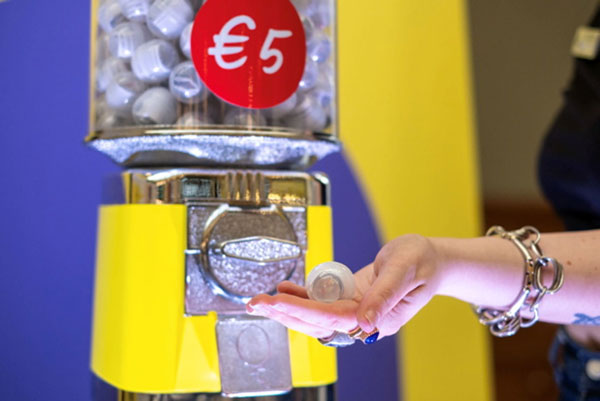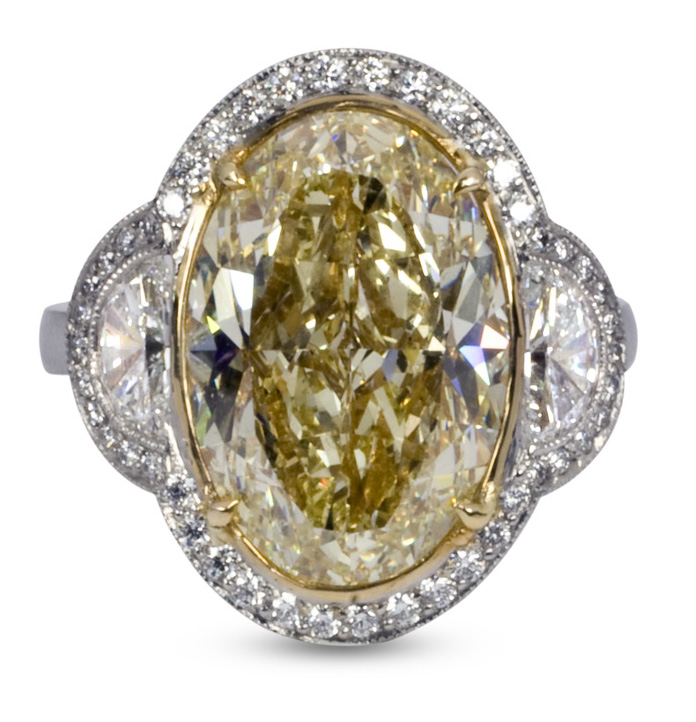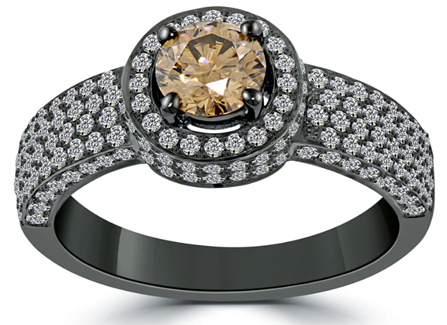 Going for the brown
Going for the brown
This could be a Horatio Alger story of gemology: The overlooked brown diamond rises from its humble origins to secure a place in the world of fashionable jewelry.
Its path to success is marketing.
When it comes to diamonds of color, the elites are the color-saturated fancies, deep blues, greens, pinks, so rare and expensive that most consumers can just admire them in photos of celebrities or royalty.
At the other extreme, the star gem for engagement rings and other high-value jewelry, the diamond that is hyped as "forever," has long been the colorless diamond. Indeed, when most people think of diamond, they imagine a flashing faceted stone that's all sparkle with no color.
But in the gem world, only about 20% of mined diamond are regarded as gem quality. The vast majority of mined diamond has been considered unsuitable for jewelry because it is of poor clarity or is "off-color," having traces of yellow or brown. Such material sometimes found its way into poor quality jewelry or was simply destined for industrial uses such as cutting, drilling, and polishing.
In a surprise move, De Beers recently announced a new industry-wide program promoting diamonds that are off-white, yellow or brown. That is, the new program will promote mined diamonds of these colors. It's a tactic aimed at increasing the sale of mined diamonds over lab-growns.
Mined v. Lab-Grown
Mined diamond has always been De Beers' focus. The company invented the slogan "A diamond is forever" back when mined diamond was the only kind found in high-value jewelry.
But these days there's competition, and many mining companies (as well as jewelry retailers) are concerned about the slumping sales of mined diamond.
At a shopping mall in Antwerp, a gumball machine dispensed lab-grown diamonds, weighing about 0.30 carats each, for €5(about $5.70) apiece. It was part of a campaign to demonstrate to consumers the low value of diamonds made in a lab.
As lab-grown diamond (LGD) increased in quality and consumer popularity, De Beers came up with its own LGD brand, Lightbox, which made and sold lab-grown diamond jewelry at super-low prices. Lightbox advertising and pricing aimed to create the perception that LGDs were far less valuable than mined diamonds and that, in fact, only mined diamond was real diamond. That effort didn't work out well, and Lightbox comes to an end this year.
De Beers' new promotion of mined diamond is called Ombré Desert Diamonds, a name chosen to reflect the "beautiful African deserts" where De Beers mines many of its diamonds. The premise is that gem-growing labs are producing colorless diamonds and diamonds of strong colors, but nature produces a range of subtle colors. These diamonds can be marketed under names like champagne, warm white and amber. The CEO of De Beers Group said that each gem is unique in color and origin, which "contrasts completely with the endless array of commoditized lab grown."
Brown diamonds are not new in the marketplace. Champagne, cinnamon, honey, cognac, caramel, nutmeg, butterscotch, espresso, clove, toffee and café au lait diamonds made their way into jewelry advertising a few decades ago. Chocolate Diamond® is even a registered trademark.
Rarity doesn't seem like much of a selling point here, as there is no shortage of mined diamond in this color range. For most diamond mines, 15% of the production is in the brown range, and for some mines it's as high as 80%.
Yet De Beers' CEO held on to the importance of that quality: "For 600 years, people have loved natural diamonds because they are beautiful and rare," he said. Lab-grown diamonds "aren't rare, and they certainly won't be in 600 years' time. Natural diamonds will be even more scarce than they are now." But he added, rather sheepishly, "Then again, none of us will actually be around to find out."
As for the De Beers initiative called Ombré Desert Diamonds: well, there already exists a brand called Desert Diamonds. It proudly offers "lab-created conflict-free diamond simulants . . . providing a perfect alternative to mined gemstones."
It's easy to be misled by clever marketing. Despite what De Beers would like consumers to believe, lab-grown diamond is real diamond. (It is not a simulant, which is some other material made to look like diamond.)
Some designers of high-end jewelry are making beautiful use of brown diamonds. Makers of lower-quality jewelry may piggy back on their success and try to catch the fashion trend.
Because fashions can change, so be sure to keep valuations updated.
Given the abundance of brown diamond, off-color stones are already used in poor-quality jewelry produced here and abroad. Be wary of fraud taking advantage of a new fashion.
In the current market, mined diamond has a significantly higher valuation than lab-grown diamond, so all appraisals and lab reports should specify whether the gem is lab-made or mined.
The market valuation of both mined and lab-grown diamonds is in flux, so that's another reason to keep valuations current.
It goes without saying that chocolate and butterscotch are not gemological terms for gem color. But there's little standardization here. At least be sure to get photos, and keep on file any materials from the seller.
A mined gem is sometimes called natural. A gem may be of natural (mined) origin, but it's color may not be. Treatments can disguise a low-quality gem and they may not last. Be sure the appraisal and lab report name any treatments of the gem or else state that the gem is untreated.
If you have a completed JISO 78/79 appraisal, it should contain all the information you need to price a replacement.
If you are working with other documents, use JISO 18 to put all your information into a standardized format. This will organize the information you have and help determine whether any details are missing.
Carefully examine documents for synthetic or equivalent words: cultured, lab-grown, man-made, etc.
A mined gem is sometimes described as natural. However, its color may not be natural, so examine the documents for the words treatment or enhancement, or for a statement that the gem is untreated.
If you see a brand name, be sure you understand the significance of it. A brand name often reveals whether the gem is mined or lab-grown, and the valuation difference can be immense, especially with colored diamonds.
©2000-2025, JCRS Inland Marine Solutions, Inc. All Rights Reserved. www.jcrs.com




